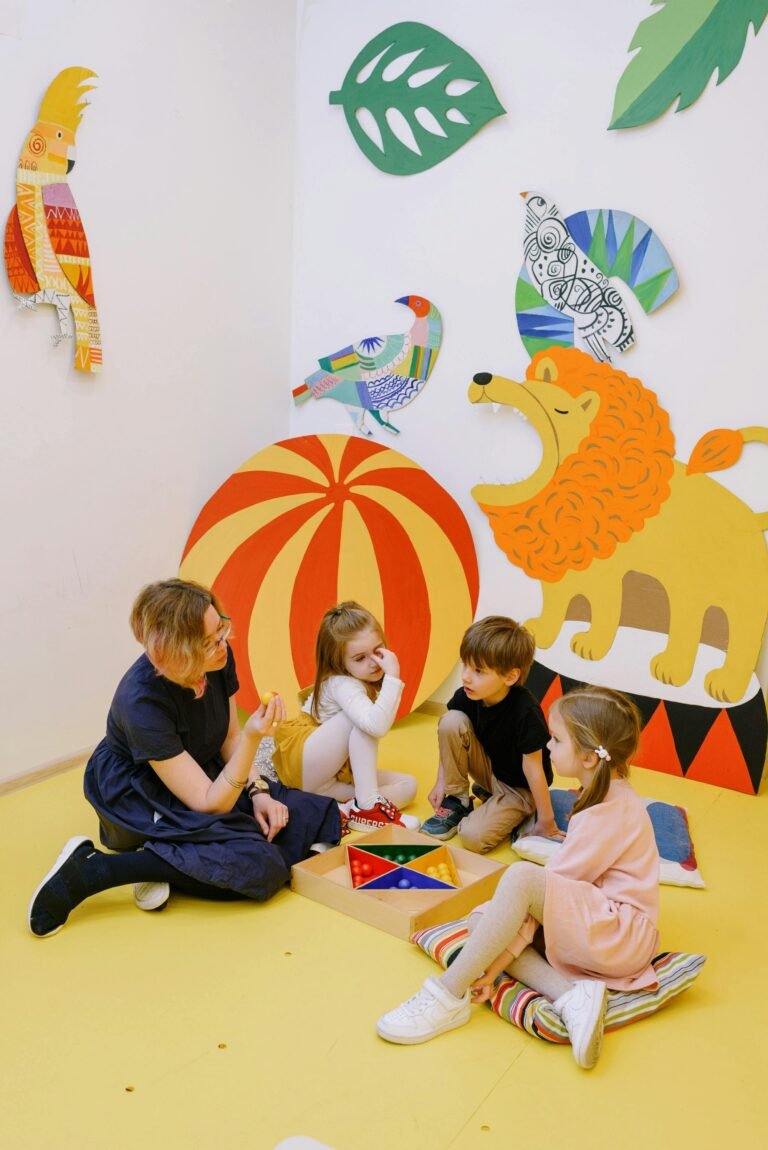
For children with autism, developing strong literacy skills opens doors to communication, independence, and academic success. Among the most critical foundations of literacy are phonemic awareness and phonics—skills that form the building blocks for reading and writing. In this article, we’ll explore evidence-based strategies for teaching these essential skills to children with autism, with approaches that can be adapted across different age groups and ability levels.
Understanding Phonemic Awareness and Phonics
Phonemic awareness is the ability to recognize and manipulate individual sounds (phonemes) in spoken words. It’s a purely auditory skill that precedes reading and forms the foundation for phonics instruction.
Phonics takes this a step further by teaching the relationship between these sounds and written letters, enabling children to decode written words.
For many children with autism, these skills can present unique challenges:
- Processing auditory information may be difficult
- Abstract connections between symbols (letters) and sounds may not be intuitive
- Traditional teaching methods might not align with their learning style
However, with structured, multisensory approaches that leverage the visual strengths many children with autism possess, these skills can be successfully developed.
Evidence-Based Strategies for Teaching Phonemic Awareness
Multisensory Instruction
Children with autism often benefit from instruction that engages multiple senses simultaneously:
- Visual-Auditory Connections: Pair sounds with consistent visual cues. For example, when teaching the /s/ sound, show a picture of a snake alongside the letter ‘s’.
- Tactile Experiences: Have children form letters with clay, trace sandpaper letters, or write in shaving cream while making the associated sounds.
- Movement Activities: Incorporate body movements that represent different sounds. For instance, children might “slither” like a snake while practicing the /s/ sound.
Structured Sound Play
Systematic instruction in sound awareness helps build this critical skill:
- Sound Isolation: Practice identifying the first, last, or middle sounds in words, starting with more pronounced sounds.
- Sound Blending: Model how to blend individual sounds together to form words (e.g., /c/-/a/-/t/ becomes “cat”).
- Sound Segmentation: Teach children to break words into individual sounds, using visual supports like counters or blocks to represent each sound.
- Sound Manipulation: Practice changing sounds in words to create new words (e.g., changing the /m/ in “mat” to /c/ makes “cat”).
Visual Supports
Visual supports are particularly effective for children with autism:
- Sound-Picture Cards: Create cards with pictures representing each phoneme.
- Sound Boxes: Use divided boxes where children can place a token in each box as they segment the sounds in a word.
- Color-Coding: Assign colors to different sounds or sound patterns to make them more distinct and memorable.
- Visual Schedules: Create visual sequences for phonemic awareness activities so children know what to expect.
Effective Phonics Instruction for Children with Autism
Systematic and Explicit Instruction
Research consistently shows that children with autism benefit from instruction that is:
- Systematic: Following a logical sequence from simple to complex
- Explicit: Directly teaching each skill rather than expecting incidental learning
- Cumulative: Building on previously mastered skills
- Mastery-Based: Ensuring proficiency before moving to the next skill
ABA-Aligned Approaches
Applied Behavior Analysis principles can be effectively integrated into phonics instruction:
- Discrete Trial Training (DTT): Teach letter-sound correspondences through structured, repeated practice with immediate feedback.
- Errorless Learning: Set up learning experiences to minimize errors and maximize success, gradually increasing difficulty.
- Differential Reinforcement: Provide specific praise and rewards for correct responses, gradually fading external reinforcers.
- Task Analysis: Break down complex phonics skills into smaller, manageable steps.
Sight Word Integration
While phonics is essential, many children with autism also benefit from simultaneous sight word instruction:
- Balanced Approach: Combine phonics with sight word instruction for functional reading skills.
- High-Utility Words: Focus on words that have immediate relevance to daily life.
- Word Families: Teach patterns in words (e.g., -at family: cat, hat, bat) to reinforce phonics patterns.
Practical Activities for Different Age Groups
Early Elementary (K-1st Grade)
- Letter-Sound Matching Games: Match letters to objects or pictures that begin with that sound.
- Sound Sorting: Sort pictures by their beginning, middle, or ending sounds.
- Phoneme Counting: Count the number of sounds in simple words using manipulatives.
- Rhyming Activities: Match rhyming pictures or generate rhymes for simple words.
Middle Elementary (2nd-3rd Grade)
- Word Building: Use letter tiles to build words with specific phonics patterns.
- Decodable Texts: Practice reading books that focus on specific phonics patterns.
- Word Sorts: Categorize words by spelling patterns or sound features.
- Sound Manipulation Games: Change sounds in words to create new words (e.g., changing “cat” to “hat”).
Upper Elementary (4th-5th Grade)
- Multisyllabic Word Strategies: Teach techniques for breaking down longer words.
- Structural Analysis: Focus on prefixes, suffixes, and root words.
- Word Mapping: Create visual maps showing how words are related through sounds and spelling patterns.
- Advanced Phonemic Manipulation: Practice more complex sound substitutions and manipulations.
Technology Tools to Support Phonemic Awareness and Phonics
Digital tools can provide additional support and engagement:
- Interactive Apps: Programs like Starfall, Reading Eggs, or Phonics Hero offer structured phonics activities with immediate feedback.
- Text-to-Speech Software: Helps reinforce the connection between written text and sounds.
- Digital Letter Boards: Allow for interactive letter manipulation and word building.
- Recording Tools: Enable children to record and listen to their own pronunciation of sounds and words.
Monitoring Progress and Adjusting Instruction
Ongoing assessment helps target instruction appropriately:
- Regular Skill Checks: Assess mastery of specific phonemic awareness and phonics skills.
- Error Pattern Analysis: Look for patterns in mistakes to guide instruction.
- Progress Monitoring: Track improvement in decoding skills over time.
- Generalization Probes: Check if skills transfer to new words and contexts.
Essential Tools for Teaching Phonemic Awareness and Phonics
Having the right materials can significantly enhance your teaching effectiveness. Consider adding these tools to your collection:
Multisensory Letter Sets
Our Tactile Letter Kit includes sandpaper letters, magnetic letters, and letter-shaped sponges that provide multiple sensory experiences while learning letter-sound relationships. These durable materials are perfect for hands-on learners and can be used for countless activities.
[Shop Tactile Letter Kit]
Phonemic Awareness Activity Sets
The Sound Play Activity Box contains everything you need for structured sound play: picture cards for sound isolation, blending boards, segmentation mats, and manipulatives. All materials are color-coded and organized for easy use in therapy sessions or home practice.
[Shop Sound Play Activity Box]
Decodable Readers Collection
Our Autism-Friendly Decodable Book Series features controlled text that aligns with phonics instruction, simple illustrations that support rather than distract, and visual cues for sound patterns. Each set includes books organized by phonics patterns with accompanying activity guides.
[Shop Decodable Book Series]
Visual Support Systems
The Phonics Visual Support Kit includes sound-picture cards, phonics rule charts, and color-coded phoneme markers designed specifically for children with autism. These visual supports help make abstract phonics concepts more concrete and understandable.
[Shop Phonics Visual Support Kit]
Conclusion
Teaching phonemic awareness and phonics to children with autism requires patience, consistency, and an individualized approach. By combining evidence-based strategies with appropriate visual and multisensory supports, you can help your child or student build these critical foundational skills.
Remember that progress may look different for each child, and celebrating small steps forward helps maintain motivation and confidence. The strategies and tools outlined in this article provide a starting point that can be adapted to meet your child’s unique needs and learning style.
Ready to enhance your phonics instruction? Explore our complete collection of phonemic awareness and phonics tools designed specifically for children with autism. Visit our online store to find the perfect resources to support your child’s literacy journey.
[Shop Phonics Tools for Autism]
Did you find this article helpful? Share it with other parents and therapists who might benefit!
Looking for more strategies? Subscribe to our newsletter for the latest tips and resources.
[Subscribe Now]





